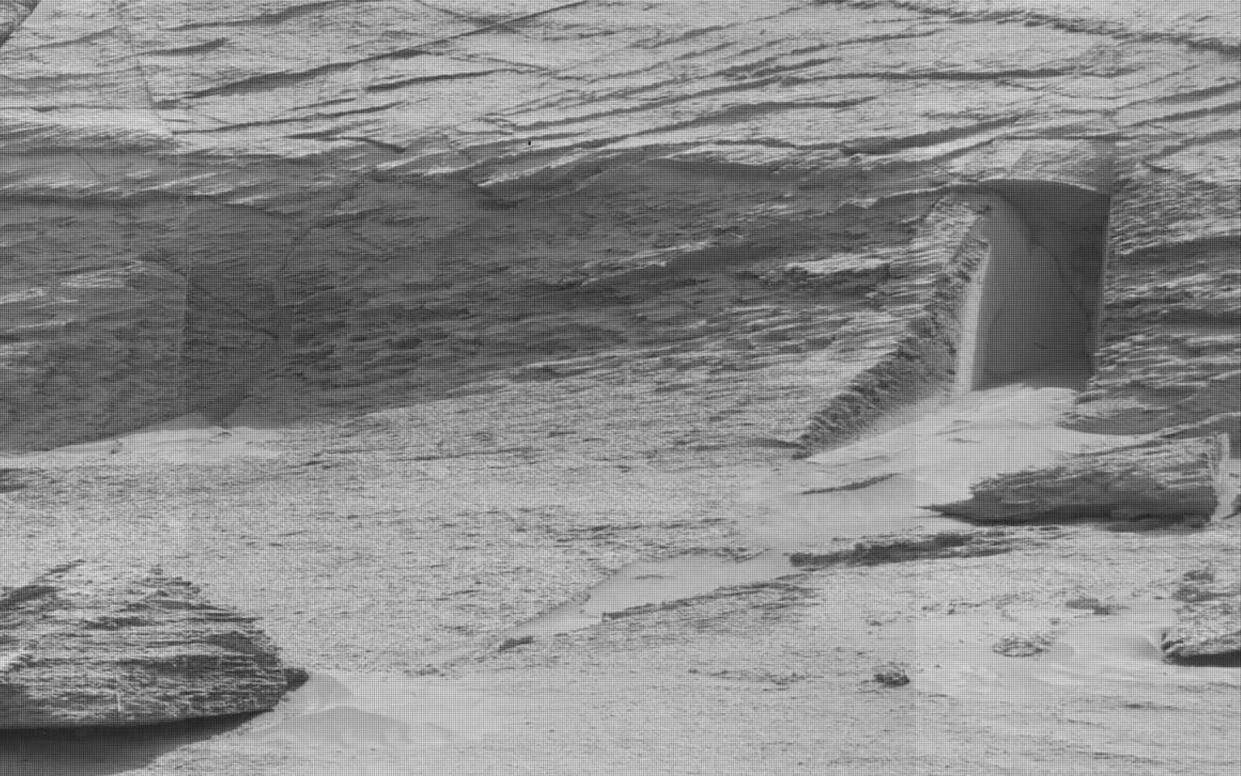Anyone home? ‘Doorway’ on Mars spawns alien conspiracy theories

At first glance, it looks as if a doorway has been carefully carved into a rock face on Mars.
The grainy image, taken by the mast-mounted camera on Nasa’s Curiosity rover on May 7 this year, appears to show an opening with an arched lintel leading to a passageway with smooth walls.
Conspiracy theorists have seized upon the snap as evidence for life on the Red Planet, but scientists were quick to point out that the surrounding geology gives a clear picture of how the formation arose - and unsurprisingly it does not require Martian architects.
A large fissure to the left of the doorway demonstrates rock-cracking events frequently occur in the region, while a boulder in the foreground appears to have fallen from the opening.
Sanjeev Gupta, a professor of earth science at Imperial College London, one of the scientists of Nasa's Curiosity rover mission, said the hole was formed through “normal geological processes”.

“The boulder likely just got eroded off a hillslope and tumbled down,” he said. “It does not require a meteorite strike.
“The crack is a fracture and they are abundant on Mars and Earth - no need for marsquakes to produce them.
“There is nothing at all strange in the image - these are just normal geological processes.”
It is not the first time that images from Mars have sparked theories that civilisations may have inhabited the planet.
In 1977, Nasa’s Viking 1 spacecraft photographed what appeared to be a face, staring up from the surface, leading to claims that Martians may have constructed monuments like the Sphinx.
When Nasa’s Mars Global Surveyor flew over the area 11 years later, snapping images 10 times sharper than the original Viking shots, the “face” was found to be a shapeless rock formation. The original facial features had been caused by shadows.
Human brains programmed to find meaning in images
In May 2015, Curiosity photographed a pyramid about the size of a small car, which some people speculated may be the capstone of a larger, buried megalith.
But at the time, Nasa pointed out that the rock was similar to angular volcanic rocks found in Hawaii or Iceland.
Humans brains are programmed to find significance in random images, a psychological phenomenon known as pareidolia.
Facial pareidolia, which is particularly strong, would have helped our ancestors to spot predators in dense undergrowth or in the dark.
It is likely to be the reason why people believed they had spotted a yeti on Mars Gusev crater, in pictures taken by Nasa’s Spirit rover in 2008. A rock which resembled an iguana was also spotted in 2013.
Scientists believe that life may once have existed on Mars, but would struggle today due to the lack of atmosphere. Nasa and the European Space Agency (ESA) have plans to drill down into the surface in the hope of finding fossilised remains of alien lifeforms.

